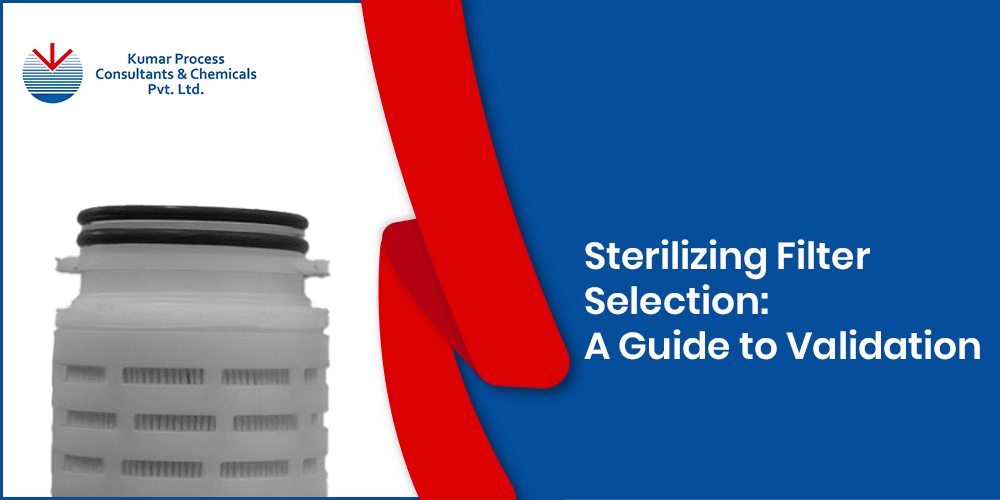


Sterilizing filters are mostly used to sterilize the filtration solution of pharmaceutical and biopharmaceutical products. Following factors need to be considered while selecting right filter media such as membrane composition, pore size, compatibility with the fluid, and regulatory compliance. Few filters are made up of single-layer membranes, while others are constructed with dual layer membranes having different pore sizes to enhance filtration efficiency. Selecting the appropriate filter ensures effective microbacterial removal, improves product integrity, and compliance with sterility requirements.
Validation is the most important step in the sterile filtration process, involving integrity testing, bacterial retention research, and performance assessments. Proper validation confirms the filter’s efficiency and reliability, ensuring sterility in the final product.
Selecting the right sterilizing filter is important for ensuring product safety and process efficiency. Many factors are needed to consider at the time of the selection process including filtration needs, flow rate, batch size, and filter longevity.
Validation of sterile filters follows the guidelines, such as ASTM F 838-15(ae1), to confirm bacterial retention and filtration efficiency.
At Kumar Process Consultants, we provide high-performance membrane filters designed for diverse sterile filtration needs, including vaccines, medicated syrups, and veterinary medicines. Our solutions ensure effective removal of contaminants before bottling and packaging. To ensure the membrane filters don't clog instantly with a high particle load, we offer a high filtration solution. Prefilters help to remove large particles before the final step, enhancing filtration efficiency and extending product life span. This step prevents clogging and ensures effective microorganism removal.
Polypropylene (PP) Pleated Filter Cartridges
Polypropylene (PP) pleated filter cartridges offer efficient filtration of chemical compounds. Their large surface area enhances particle retention while ensuring smooth liquid flow. These filters are widely used in pharmaceutical and biotechnology industries as a pre-final filtration step, protecting downstream membrane filters by removing large substances. PP cartridges cannot be repeatedly sterilized, as the polymer softens after 80 C. The membrane porosity may be altered after sterilization.
Sintered Powder Filter Cartridges
Sintered powder filter cartridges, constructed from stainless steel or titanium, provide exceptional durability and resistance to high pressure. They support steam sterilization, allowing for multiple reuses, making them cost-effective and environmentally friendly. These filters can effectively pre-filter down to 0.2 microns, significantly extending the lifespan of membrane filters while ensuring reliable and consistent filtration performance.